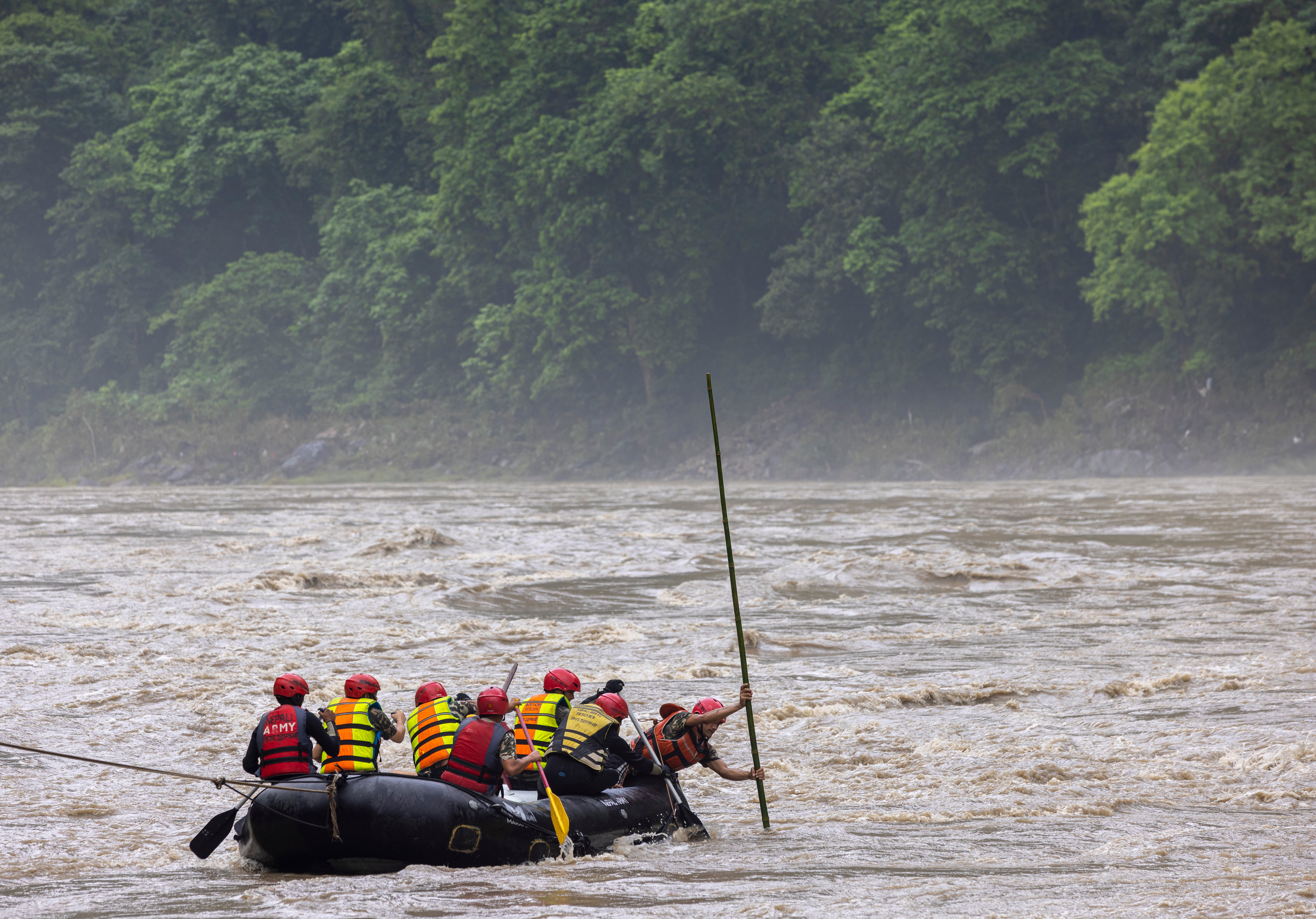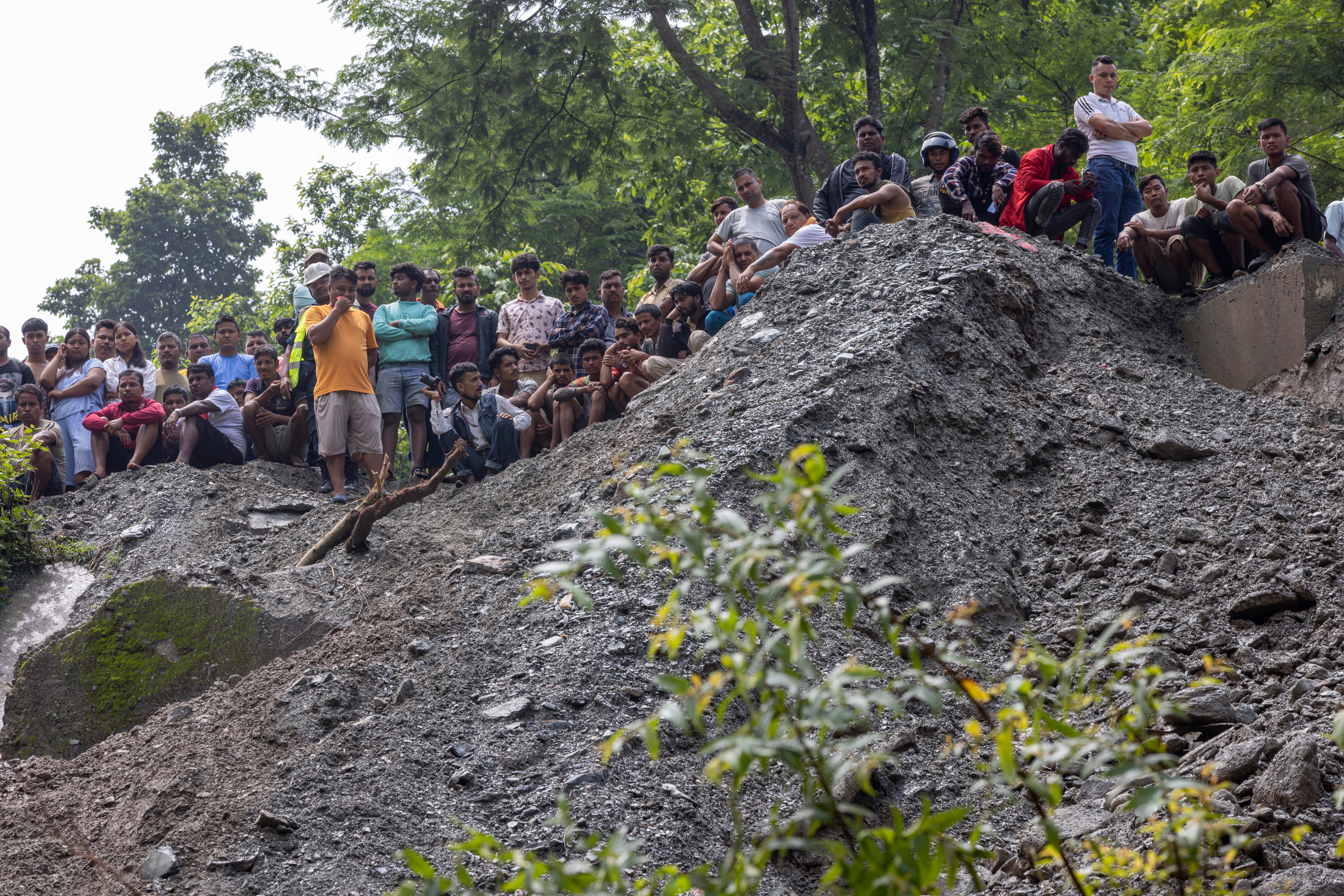Rescue teams continued searching on Saturday after a landslide in Nepal on Friday swept two buses carrying more than 60 people into the Trishuli River.
Police said the river was swollen due to continuous rainfall over the past few days and they could not find any sign of the bus or its occupants.
The weather improved slightly on Saturday, and heavy machinery was deployed to clear landslides from the highway, allowing rescuers to search more efficiently.
Chitwan district chief Indradev Yadav said a Kathmandu-bound bus and another bus travelling from Kathmandu to Gaur in Rautahat district fell into the river after the landslide which occurred at 3.30am on Friday.
The landslide caused the bus to crash through a concrete barrier and tumble down a steep slope, AFP news agency said.
“We will search all possible locations,” Yadav said.
“We will do our best to assist with search and rescue, regardless of water level, current or water turbidity.”

District official Kimmananda Bhusal said at least 66 passengers were on board the bus, but three passengers were thrown from the bus and are undergoing treatment at a nearby hospital.
“It has been more than 30 hours since the bus was swept away in the river so chances of finding any survivors are slim. The water level has receded this morning but it is still very murky,” Bhusal said. Reuters.
By Friday evening, 17 passengers had been identified, including 14 Nepalese, seven Indians and three bus crew members.
A third bus was caught in another landslide a short distance away on the same highway. The driver died while undergoing treatment in hospital, but it is unclear if there were any other victims.

Nepal’s Prime Minister Pushpa Kamal Dahal said he had instructed all agencies to search for and rescue the passengers. “We are deeply saddened by the deaths of around 50 passengers and the loss of property due to floods and landslides in various parts of the country,” he said.
Nepal, surrounded by the Himalayan mountains, experiences severe weather conditions during the monsoon season from June to September, when rains trigger flash floods, lightning strikes and landslides that kill dozens of people almost every year.
The Interior Ministry said on July 7 that at least 62 people had died in rain-related accidents in the first month of this year alone.
Nepal’s topography and extensive river network make it highly vulnerable to disasters, a situation that is likely to be exacerbated by climate change.







